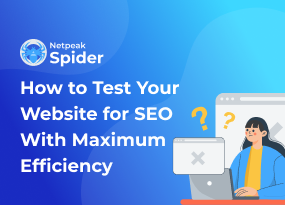Customer Retention: How to Get to Know your Audience
How to
Leads, leads and more leads – they are what you hear about 90 percent of the time when it comes to marketing. Leads are extremely important for marketing. They are how you secure new customers, build brand awareness and pay the bills 😀 With lead generation techniques at hand, it's easier to collect them efficiently.
But what do we do with those leads once they convert to customers?
With all the focus on lead generation, customer retention often gets put on the back burner. You already have the customers, so why channel your focus into them once they convert?
According to HubSpot, 55 percent of customers currently trust companies less than they used to. Why so? Companies focus their sales and marketing efforts too much on leads instead of treating existing customers with the same – or more – level of value.
But if customer retention becomes more of a focus, it’s better for every part of the business. In fact, Bain & Company reported that a five percent increase in customer retention correlated with a 25 percent increase in profit, from their numbers.
A shift in concentration in this area shows existing customers that you care about them, their experience, and their business. Customers want to return to the same business. Think of how much research goes into one purchase, and time is money. That’s why 90 percent of customers are likely to purchase more than once, according to HubSpot research.
Below, we’ll cover how to encourage them to do just that.
- 1. Get to Know Your Customers
- 2. How Marketing for Leads Helps Customer Retention
- 3. How to Put Customer Retention Marketing Strategy Into Practice
- Summing Up
1. Get to Know Your Customers
The first step in retaining your customers is truly getting to know them. What interests them? Where do they spend their time – physically and digitally? What do they value? How does your business support what they want or need?
1.1. Analyze Your Customers’ Digital Behavior
Frame these questions with digital analytics:
- Where are your customers clicking on your page? This will provide insight into what is catching their attention.
- When do they bounce from your website? This insight will help create more engaging features and content on your website
There are several tools such as Google Analytics and Hotjar that can provide this information for you. To get complete raw data for marketing analytics and reporting, you can export Google Analytics data.
1.2. Conduct Keyword Research
Keyword research is another way to better understand your existing audience. What terms are your typical customers searching? This is definitely a way to better understand potential customers, but it also provides insight into those already partaking in your business.
Are there common issues or problems they are facing, that your business can help solve? Are they searching for information that you can provide for them? They’re already on your website as a customer, so why not make sure their experience is as valuable as possible?
Use keyword research to make your website the one-stop shop for all your customers. If you go above and beyond providing them with information they need – about your product and more – then they are more likely to stay loyal to your business.
1.3. Collaborate with Other Teams
Retaining customers is really an ‘all hands on deck’ job. If you want to successfully accomplish this, you’ll need collaboration between all the teams in your business.
The marketing department hones in on the details of your customers. The marketing team is, afterall, the one who initially caught your customers’ attention. They’ll be able to provide insight into where your customers are spending their time, who they are following (on social media, blogs, news, etc.), the best way to communicate with customers and more. They’ll also be monitoring reviews to collect and report feedback.
The sales team has more direct communication with potential customers, since they are the ones who sealed the deal. Because of that, they will have more personal information about what your customers value, their pain-points and what exactly customers expect from you and your business.
The customer support team is also in direct contact with customers, and the information they collect is crucial to retention efforts. They are the ones taking direct questions and feedback about your business. Customer support can share information on what your customers are struggling with, improvements they’d like to see and more.
So much of marketing is focused on securing leads, but it’s important to also use your marketing team to gather information that will retain customers.
2. How Marketing for Leads Helps Customer Retention
Marketing for leads is definitely important. It is, afterall, how you secure new business. It differs from customer retention marketing in the fact that it is all about making that initial contact with potential customers. When marketing for leads, you are targeting new audiences and segments within your industry. That means you are spending time researching a group of people that you have not contacted before, so you are not privy to the information that you have when retaining customers.
The good news is that the information collected while marketing for leads is also applicable to customer retention marketing. In order to keep customers, you need to understand everything you can about them. Use the information collected during the ‘leads phase’ to create a strong strategy for keeping your customers, and even help them move up in services and pricing.
On top of the information from leads marketing, make sure you are collecting additional information now that your customer is with the business. Via surveys or chatbots you’ll learn what exactly is important to them, if your business is fulfilling their needs and if there are any additional related desires they have. These people are already your customers, so they already have a connection to your business and what it can offer them. If you don’t actively seek the above information, you’ll experience more customer churn.
3. How to Put Customer Retention Marketing Strategy Into Practice
But how exactly do you put your strategy into practice? How can you make sure your customers are happy, loyal, and continuing their relationship with you?
3.1. Create Content from Above Insights
By diligently collecting the above information, you can create blog articles, tutorials, assessments, quizzes and more focusing on your customers’ feedback. You’ve already got their attention, so make sure to enhance their experience as much as possible. Make your website the only place they need to go in order to answer any related questions to your business, industry and products.
1. How to Create a Content Strategy that Converts People and Reaches Business Goals.
2. 10 Ideas for Updating Old Content.
3. How to Detect and Optimize Old Content.
4. Blog Optimization to Increase Organic Traffic in 4 Steps.
3.1. Interact with Audience
So here are a few ways to know more about your audience:
- Make sure the blogs you write have the comment section turned on, and that you engage with customers in it. The comments are an opportunity for you to hear and respond to feedback. Open your ears – or eyes – and listen (or see), but don’t get defensive. A customer that takes the time to provide feedback is a customer that is invested in their relationship with your business.
- Webinars are another form of interactive content that open up two-way conversations. Plan the webinar on something that you know your existing customers want to learn more about. You can do this by scanning your comments section or literally just asking them live for feedback on topics that interest them. At the end, set aside time for questions and feedback. Make sure you go into the question session with an open mind and absolutely no defensiveness.
- Quizzes and assessments also open up two-way communication between customers and businesses. These tactics allow you to ask customers for their feedback directly. They can also help businesses spot trends with the feedback data they receive, which will help them when trying to better their services based on the questionnaires.
3.2. Collect Testimonials
Testimonials are essential for every part of marketing. They show what customers truly feel about your services and highlight the parts that are working. Even the process of collecting testimonials opens up communication between customers and businesses. Talking one-on-one with customers is extremely valuable for collecting feedback and showing that your business truly cares about their opinions.
3.3. Build Strategic Landing Pages
Use your customers’ feedback to create strategic landing pages on your website.
- Are they interested in your business offering additional services? Create a landing page based on those services.
- Are customers asking additional questions about existing services? A landing page can also cover the answers to those questions.
Make your website a reflection of your customers’ needs, and focus on making it easy to navigate.
Summing Up
Two-way communication gives you room to inform your customers, and to listen to their questions, feedback and the general language they speak when it comes to your industry and products. That interaction is key in customer retention.
By creating relevant, usable content, the quality of your online presence will also increase. This will, in turn, be picked up by search engines, which will make you rank higher in search results.
At the same time, potential customers will appreciate the quality that your brand reflects through the language you speak in your blog, testimonials, assessments and webinars. Well-considered content engages existing customers, and attracts qualified leads at the same time. That’s how the circle closes itself, and that's how you grow your business.



